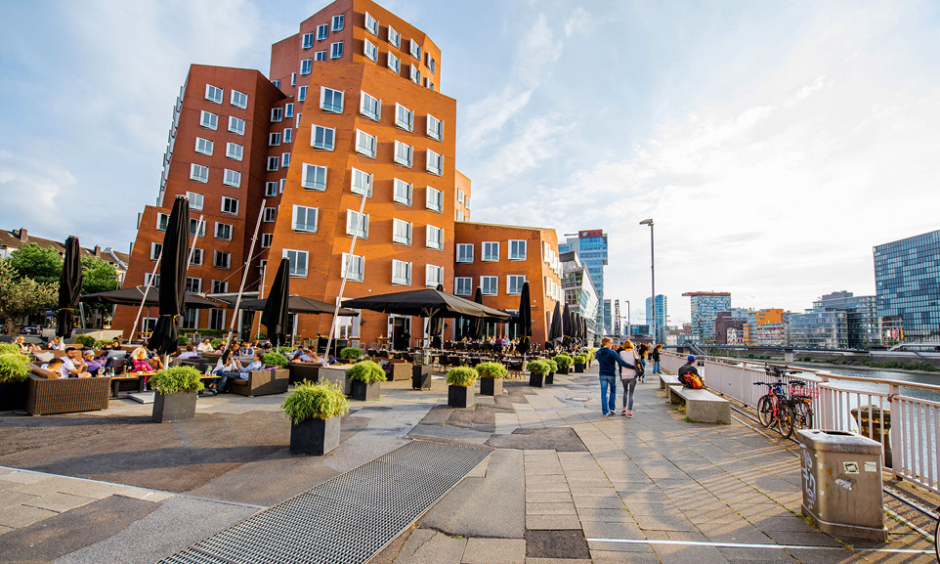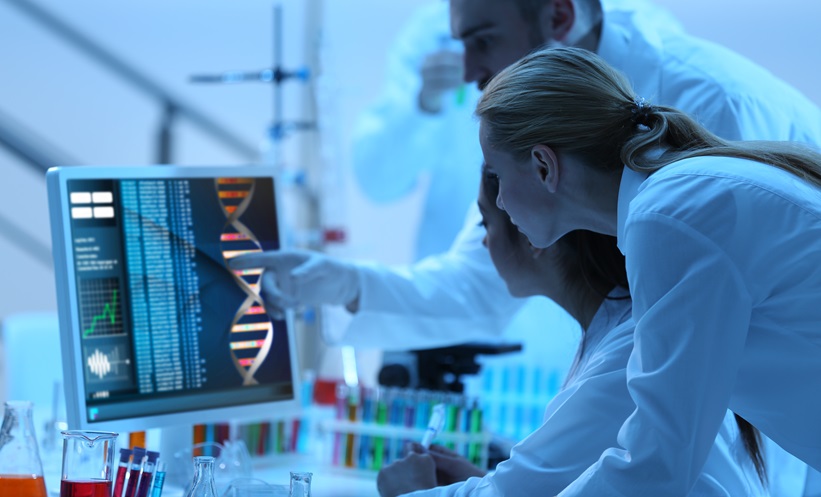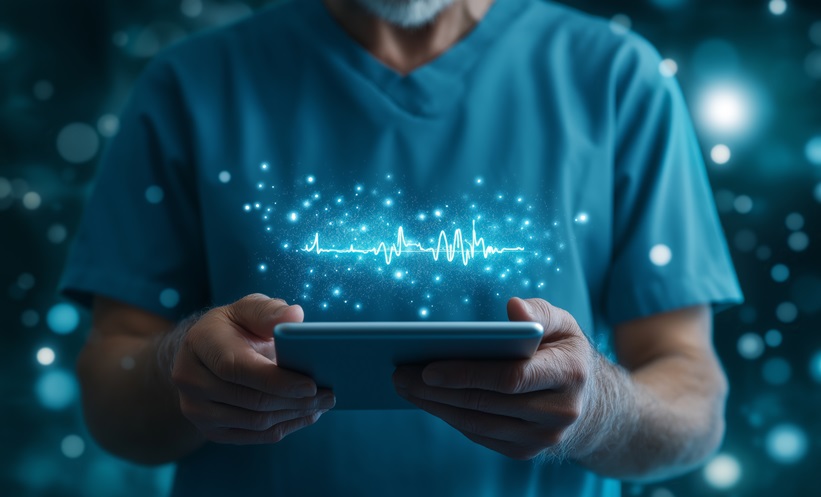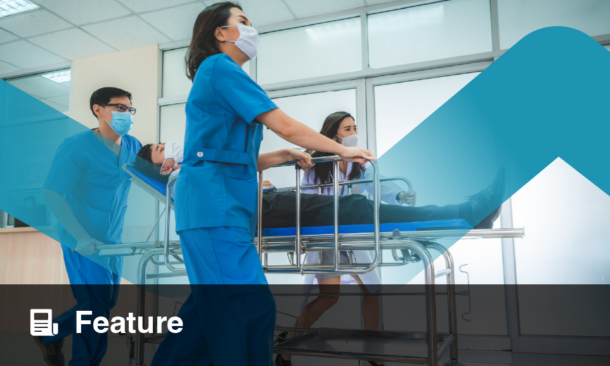Written by James Coker | Reporter, European Medical Journal | @EMJJamesCoker
![]()
Held as always within the confines of the world-renowned Messe Düsseldorf convention centre, this year’s annual edition of MEDICA promises to be another fantastic event for the various healthcare professionals in attendance. It is the largest medical trade fair in the world, with in excess of 5,000 exhibitors from almost 70 countries expected to be displaying the latest innovative products that promise to contribute to the enhancement of outpatient and clinical care. Digital transformation is expected to be the number one area covered during this year’s event, with increasing interest in how the phenomenon is shaping the health economy worldwide and changing both processes and business models alike. In addition to its trade fair, MEDICA 2018 will present six forums and several special shows on numerous medical-technology subject areas, with expert speakers and panels keeping attendees informed of the latest trends and technological developments from a variety of sectors. The six forums are the following, MEDICA ECON FORUM, MEDICA HEALTH IT FORUM, MEDICA CONNECTED HEALTHCARE FORUM, MEDICA TECH FORUM, MEDICA LABMED FORUM, and MEDICA WOUND CARE FORUM. For the third year in a row, the EMJ team will be providing coverage of the latest innovative advancements in healthcare that are showcased in the next edition of the EMJ Innovations eJournal, which will be published in early January 2019. To ensure you receive first-hand news of this edition as soon as the journal becomes available, you can subscribe to our innovations content for free by clicking here.
History of the Congress
The MEDICA trade fair has been an annual event for over 70 years now, growing increasingly in popularity and international in nature as time has passed. The event has always taken place at the Messe Düsseldorf, a large exhibition centre which has hosted many trade fairs since its foundation in 1947.1 MEDICA regularly attracts around 125,000 visitors, emphasising the esteem in which it is held by professionals from hospitals, research, practices, and industry alike.
Last Time
Last year, MEDICA was attended by 123,500 visitors from over 130 different countries for 4 days from 13th–16th November 2017. The EMJ’s review of the event, published in the latest edition of the EMJ Innovations eJournal, can be found here. This includes a review of the latest developments in wearable technologies, a topic which featured heavily at MEDICA 2017, with dedicated sessions during the MEDICA CONNECTED HEALTHCARE FORUM as well as The Wearable Technologies Show; reporting of advancements in augmented and virtual reality eyewear, and their exciting potential application in the clinical setting; and discussions regarding personalised care in sports medicine, which featured substantially in the MEDICA MEDICINE + SPORTS CONFERENCE forum.
Important Timings
As alluded to above, in recent years there has been a vast growth in dedicated expert sessions taking place at the MEDICA. This year, the MEDICA CONNECTED HEALTHCARE FORUM, taking place in Hall 15 Stand 15C24, will hold a new initiative entitled the MEDICA DISRUPT Startup Sessions. Here, during the times of 13.00–14.00 on Monday 12th, Tuesday 13th, and Thursday 15th November, and from 12.20–13.00 on Wednesday 14th November, a total of more than 50 start-up companies will present their innovative products to the audience. In addition, the highly popular MEDICA App COMPETITION will once again form part of this particular forum on 14th November from 15.00–17.00. In this session, 10 developers of mobile health application solutions will pitch their product to an expert jury panel, who will ultimately select the top 3 and winner.
Another set of sessions of great interest to attendees is within the MEDICA HEALTH IT FORUM, which this year is focussing on AI, FHIR, 5G, 3D printing, smart medication, digital platforms, gamification, sheHealth, FabLab, UX, VR, eMental health, and cyber security in a series of lectures and panel discussions. Held at Hall 15, Stand 15E56 and 15E60 on each of the 4 days, attendees will also have the opportunity to actively participate through formats such as the Innovation Space and Hands-on-Sessions.
The MEDICA LABMED FORUM 2018 will likewise offer lots of valuable insights to visitors to MEDICA. Open on each day of the conference from 10.30–16.00 in Hall 18, this forum will highlight detection infectiology, laboratory diagnostics in diabetology and sports medicine, biomarkers in cardiology, and will also bring together industry and young scientists.
The overall MEDICA exhibition area, encompassing a whopping 17 separate halls, will be available to visitors to browse from the times of 10.00–18.00 on each day throughout 12th–15th November.2
Hot Topics
The products that will be exhibited at MEDICA have been divided into seven broad categories, ensuring coverage of all areas of healthcare technology. These are Electromedical Equipment / Medical Technology; Laboratory Technology; Diagnostics; Physiotherapy / Orthopaedic Technology; Commodities and Consumer Goods; Information and Communication Technology; Medical Services and Publications.
Social Media
You can stay attuned to everything taking place at this year’s edition of MEDICA by following the official MEDICA Twitter (@MEDICATradeFair) and Facebook (https://www.facebook.com/MEDICATradefair/) pages.
History of the City
Located in Western Germany, Düsseldorf is thought to have emerged in the 7th or 8th centuries from tiny farming and fishing villages located around the meeting place of the Rhine and Dussel rivers, although it wasn’t mentioned in writing until the 12th century. Indeed, Düsseldorf translates as ‘Village on the Düssel’. Following control of the area being taken by the Duchy of Berg in 1186, Düsseldorf grew in size and significance, becoming the capital of the Berg in 1380.1
The city came under the control of the Wittelsbach Counts of the area Palatinate Neuberg in 1609 after the Berg family line ended, who made it capital of the Palatinate in 1614. During the 18th century, the city flourished economically, growing quickly as a result. In 1806, during the Napoleonic conflict, Napoleon Bonaparte established the Grand Duchy of Berg with as Düsseldorf its capital; this was until 1815, when Prussia officially took over the administration of this area.3
Later that century, the industrial revolution brought about rapid social change to Düsseldorf, with the population of the city doubling to over 200,000 residents between 1882 and 1892. During World War 2, its buildings received a substantial amount of damage. Following the end of the conflict in 1945, the city was made capital of the newly created North Rhine-Westphalia state and has since recovered to become highly successful, establishing itself as an important and internationally-recognised place of industry, an attractive place for businesses to base themselves.4
Places to Visit
During your stay in the city, there are numerous places to visit and see if you have time following a full day at MEDICA. Here are three in particular we have picked out:
The Embankment Promenade: This long pedestrian route alongside the Rhine River provides a scenic route, lined with cafes, restaurants, galleries, and shops, connecting the Old Town to the state’s Parliament buildings.
Schloss Benrath: A magnificent Baroque palace easily accessible from the city centre by public transport, this attraction offers a beautiful park and gardens to stroll around in, splendid architecture, and three museums providing education on various aspects of life in the 18th century.
Old Town Düsseldorf: The Altstadt provides a number of notable sites for tourists, including the Castle Tower (Schlossturm), the Town Hall (Rathaus) and a large equestrian statue of Elector John William II that was erected in 1711, and is well worth a visit during a trip to Düsseldorf.5
MEDICA 2018 promises to once again be a monumental occasion in the calendars of anyone in the medical industry who has a stake or interest in innovative technological healthcare solutions. We are keen to hear your thoughts and ideas in this fascinating sector of healthcare!
REFERENCES
- World Guides. Dusseldorf History Facts and Timeline. Available at: http://www.world-guides.com/europe/germany/north-rhine-westphalia/dusseldorf/dusseldorf_history.html. Last accessed: 23 October 2018.
- MEDICA. The Forums. Available at: https://www.medica-tradefair.com/cgi-bin/md_medica/lib/pub/tt.cgi/Forums.html?oid=79166&lang=2&ticket=g_u_e_s_t. Last accessed: 23 October 2018.
- Landschaftsverband Rheinland – Qualität für Menschen. The Rhineland under the French (1794 – 1813). Available at: http://www.wir-rheinlaender.lvr.de/engl_version/rhineland_french/. Last accessed: 23 October 2018.
- Encyclopaedia Britannica. Düsseldorf. Available at: https://www.britannica.com/place/Dusseldorf. Last accessed: 23 October 2018.
- Dearsley B. 11 Top-Rated Tourist Attractions in Düsseldorf. Available at: https://www.planetware.com/tourist-attractions-/dusseldorf-d-nw-dus.htm. Last accessed: 23 October 2018.








